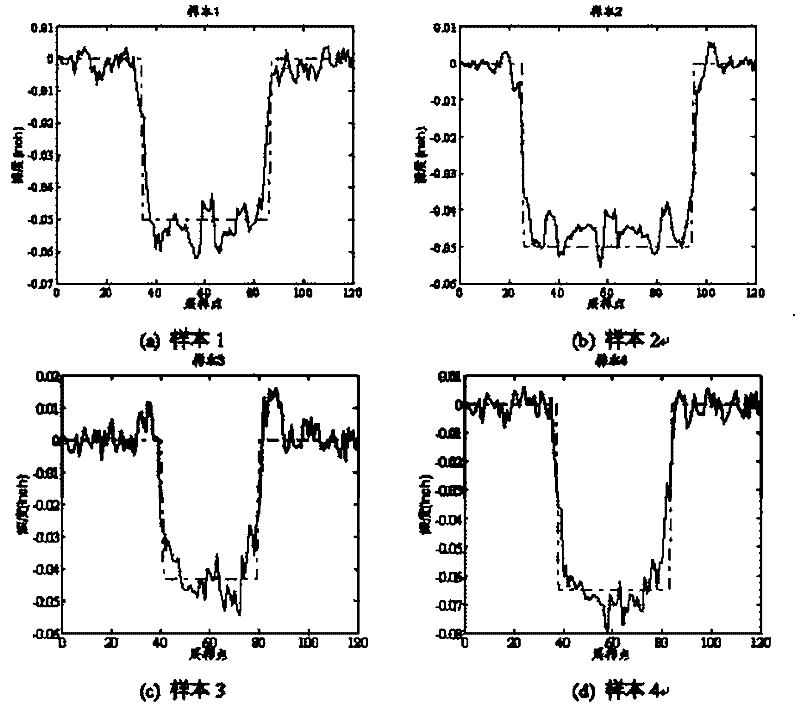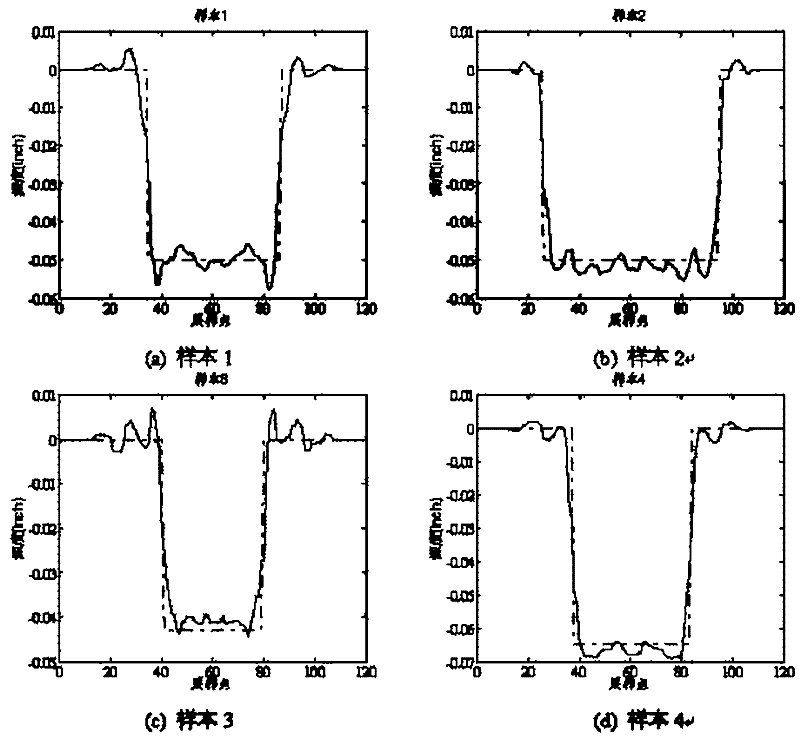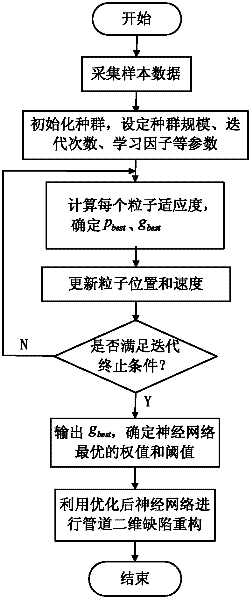Method for reproducing two-dimensional defect of petroleum pipeline PSO-BP (Particle Swarm Optimization-Back-Propagation) neural network
A PSO-BP, neural network technology, applied in the field of pipeline defect detection, can solve problems such as slow convergence speed, oscillation effect, large amount of calculation, etc., to achieve the effect of improving convergence accuracy
- Summary
- Abstract
- Description
- Claims
- Application Information
AI Technical Summary
Problems solved by technology
Method used
Image
Examples
Embodiment
[0045] The process of predicting the geometric parameters of defects according to the magnetic flux leakage signals generated by defects is essentially a process of establishing the mapping relationship between magnetic flux leakage signals and geometric parameters of defects.
[0046] (1) The measured value of the actual pipeline defect is used as the sample set for network training, and the acquired signal is used as the experimental data for defect reconstruction after preprocessing such as denoising. The magnetic flux leakage signal is used as the input of the PSO-BP neural network, and the defect contour (length and depth) is used as the output. There are 90 sets of sample data, the first 80 sets are used as training data, the last 10 sets are used as test data, and each set of data has 120 sampling points.
[0047] (2) Initialize the parameters of the particle swarm optimization algorithm, set the population size, inertia weight w, and learning factor c 1 c 2 , the num...
PUM
 Login to View More
Login to View More Abstract
Description
Claims
Application Information
 Login to View More
Login to View More - R&D
- Intellectual Property
- Life Sciences
- Materials
- Tech Scout
- Unparalleled Data Quality
- Higher Quality Content
- 60% Fewer Hallucinations
Browse by: Latest US Patents, China's latest patents, Technical Efficacy Thesaurus, Application Domain, Technology Topic, Popular Technical Reports.
© 2025 PatSnap. All rights reserved.Legal|Privacy policy|Modern Slavery Act Transparency Statement|Sitemap|About US| Contact US: help@patsnap.com



